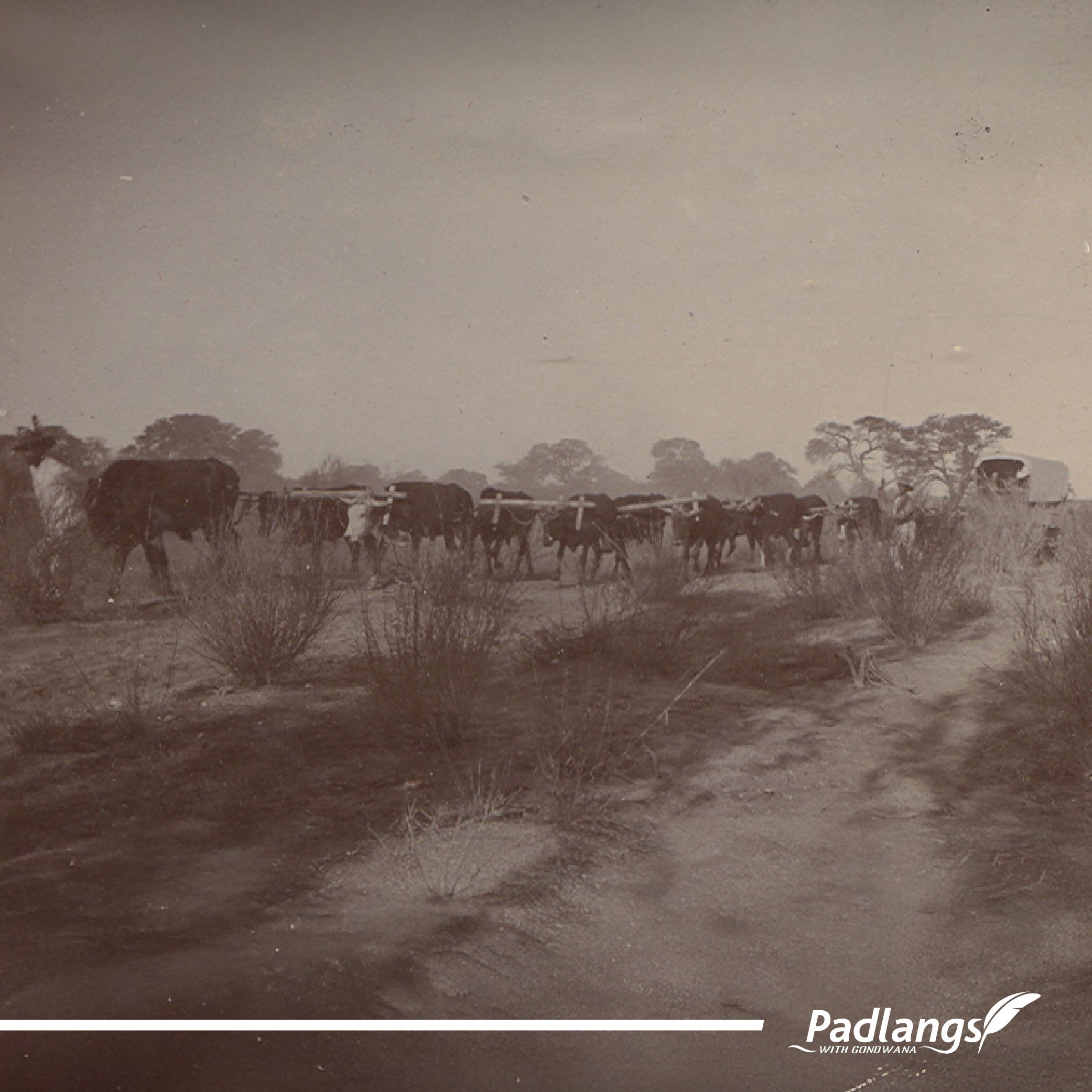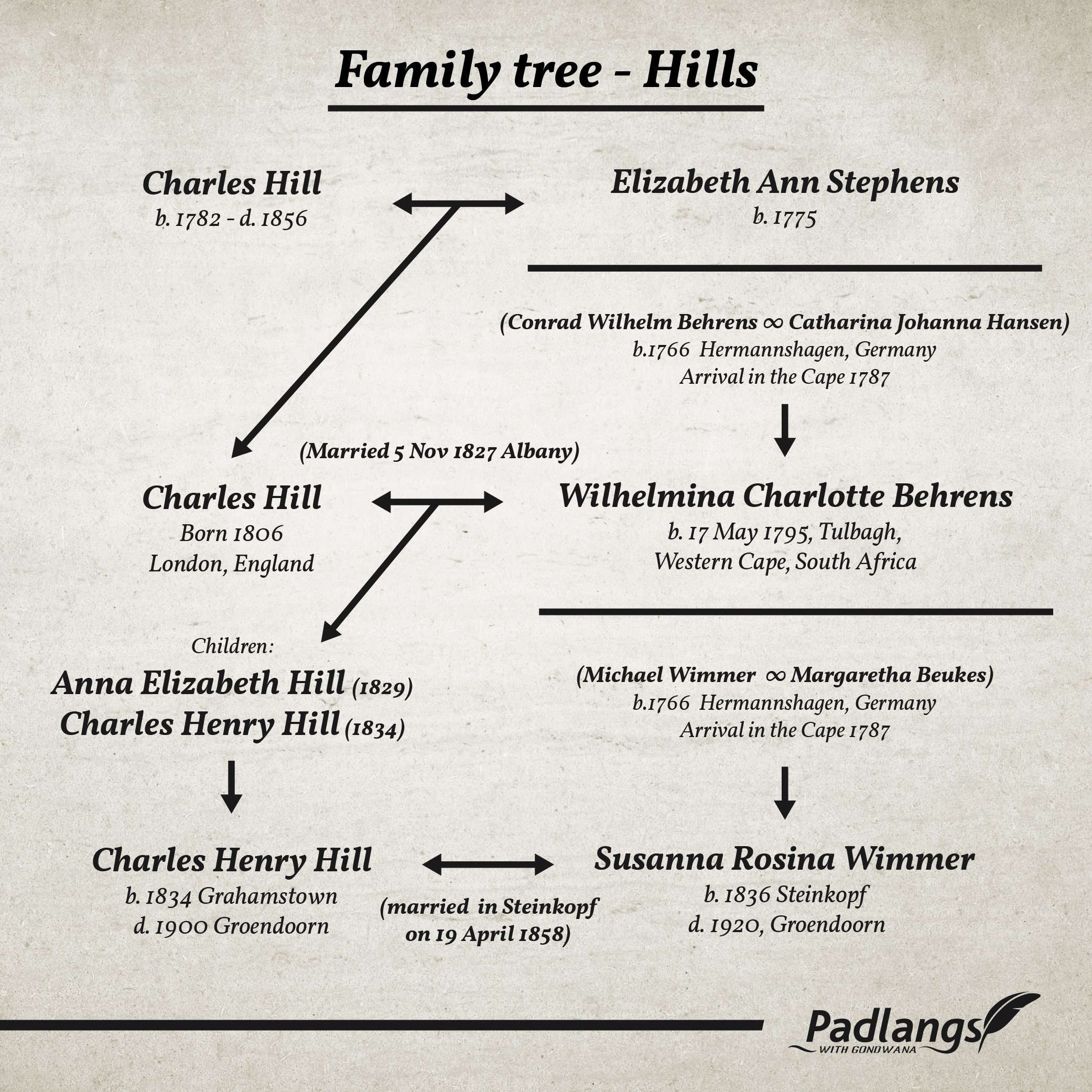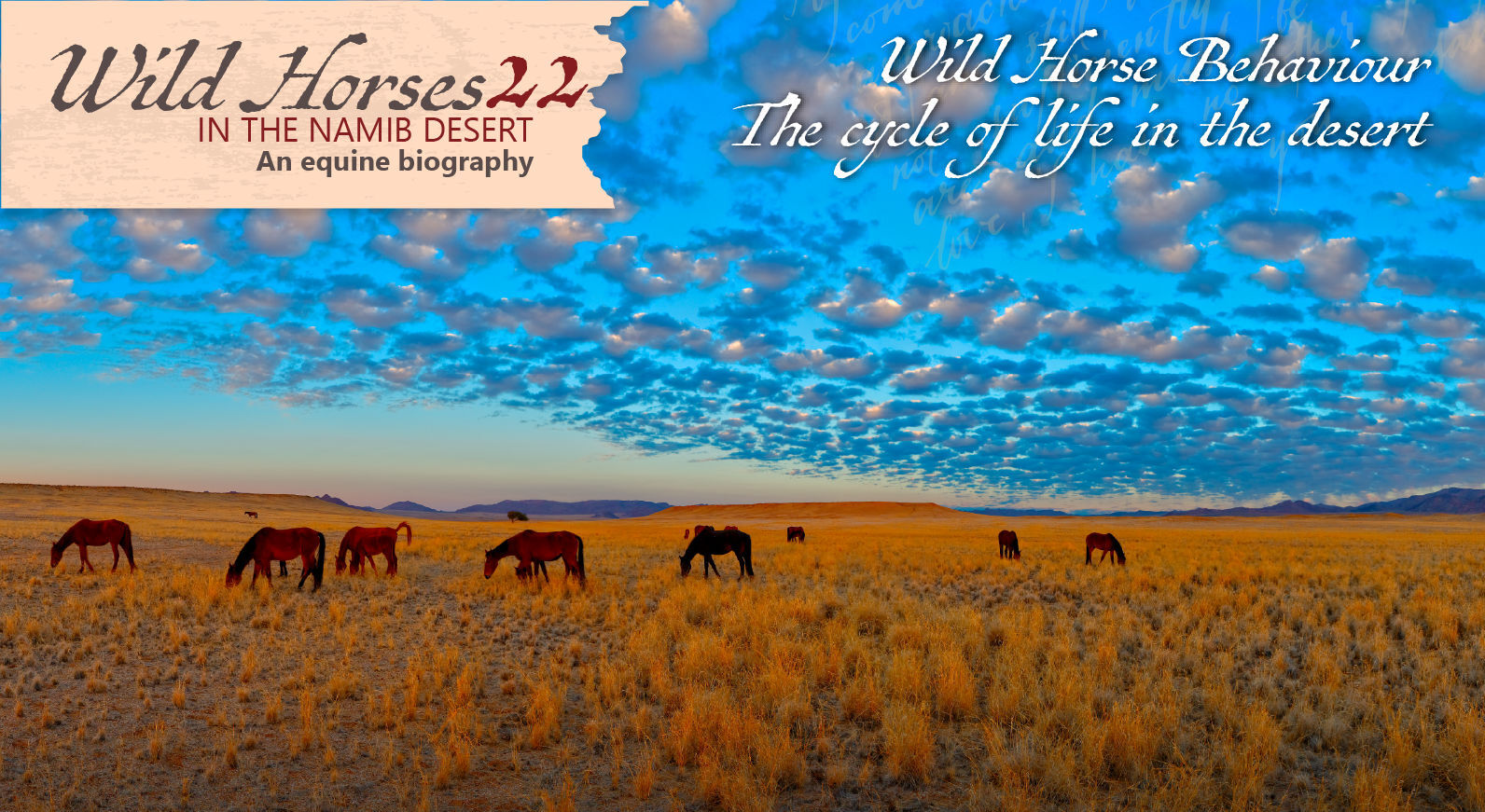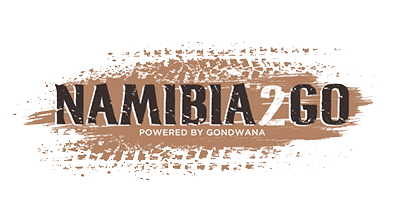Set in southern Namibia, Great Namaqualand, ‘Bittersweet Karas Home’ is the story of three families, the Hills, Walsers & Hartungs, whose lives merge and intertwine in a semi-arid land that presents both hardship and blessings. Over the next few months, we would like to share this bittersweet saga with you from the (as yet) unpublished book.
CHAPTER ONE (cont . . . )
Leaving the Eastern Cape
The second Hill generation tended to remain in the Eastern Cape and to marry within 1820 settler circles. Charles Hill junior, who was born in London in 1806 and was fourteen years old on the voyage to southern Africa, broke the family pattern. He married Dutch-German Wilhelmina Charlotte Behrens from Tulbagh in Grahamstown in October 1827. (Her first marriage had been to Gerrit Broekhuizen in Swellendam in 1813.) Wilhelmina’s father, Conrad Wilhelm Behrens, had emigrated from Hermannshagen in Mecklenburg in 1787. Although he could switch from his Mecklenburg Platt to Cape Dutch with ease, it must have been her mother, Catharina Johanna Hansen, who dominated linguistically as their second son inherited the Cape Dutch version of his name, Coenraad Willem.
Wilhelmina Charlotte was the eldest of ten children. She was twenty-three years older than her youngest brother, Carolus Johannes Ignatius Behrens. (This age difference explains Carolus’s marriage to his sister’s eldest child, Anna Elizabeth Hill, twenty years later.) Wilhelmina gave birth to Charles Henry Hill in 1834. Charles Henry was born with a destiny to journey to wide open plains and would trek to Little and Great Namaqualand in his lifetime. He, like his father, had given up on the Hill family’s Eastern Cape dream.
Trade and transport
The 1806 British take-over of the Cape had boosted trade inside the dynamic international trading empire at the forefront of the Industrial Revolution. The AmaXhosa sold hides, horns, gum Arabic, sheep and sometimes cattle. Africans had a tradition of trading with each other and eagerly engaged in trade with European traders whenever there were goods that could enhance their lives. White traders linked directly to companies in Cape Town that supplied goods on credit.

In the east and north, the Trekboers were potential customers for itinerant traders or pedlars, which were called ‘smouse’ in Cape Dutch. Trekboers went to Cape Town, Tulbagh or Swellendam once a year for baptisms, ‘nagmaal’ (Holy Communion) and for provisions, which they bought at fairs. Pedlars were welcome to provide for their in-between needs. They supplied essentials like soap, cotton cloth, pots and pans and some luxury items, but also ammunition, guns and brandy. They also accepted shopping lists for future purchases.
Trading was a rather informal and relaxed process. Traders sometimes treated customers to a drink to establish friendly relationships. Farmers often did not have any money and paid in livestock or bought on credit. Both traders and buyers were vulnerable. Buyers sometimes accumulated more debt than they were able pay back, losing land and livestock. Traders often collected debts that would never be honoured. As most payments were made in livestock, traders also stood the chance of losing their sheep and cattle to leopards and hyenas or to dangerous currents at river crossings on their trading trips around the countryside. Prices sometimes rose unacceptably, for instance when the American Civil War drove up the prices for cotton beyond what customers were willing to pay. Traders depended on circumstance, chance and good foresight. If well-armed horsemen started trailing their wagons quietly but persistently, they would have to consider buying themselves out of a tight spot rather than risking confrontation.
Khoi, Basters and Oorlams were customers too. They required guns and ammunition for hunting, self-defence and raiding. Brandy was popular because it was a more potent alternative to traditional honey beer. Such trade created moral problems because it could encourage raiding and self-destructive lifestyles. The only chance Africans had to trade directly was at border fairs organised sporadically by the Cape government. This was especially beneficial for the Afrikaner Oorlams who had been banned from the Cape.
Itinerant traders lived in their ox-wagons, which served as transport vehicles, display shops and mobile homes. There was an arterial network of tracks and trails that spanned Little and Great Namaqualand and transported people and goods. At 14 to 20 miles per day, travelling by ox-wagon had a slow-paced but steady pulse. Ox-wagons were produced on an almost industrial scale in Paarl outside Cape Town but were also custom-made by master wagon builders.

Charles Henry Hill, as a small boy, accompanied his father, Charles, on his ox-wagon trips. Ox-wagons were central to adult life, and learning the skills of a transport driver was, therefore, essential. As he hadn’t yet the strength to inspan, outspan and control the powerful oxen, he scouted for water for the oxen and for obstacles that would need to be avoided. While busy with his small jobs he closely observed what was going on around him. He noticed that not all the oxen shared the same characteristics, some being better suited for a specific task in the team than others. An ox usually had a partner that it worked well with. Oxen could be encouraged to move with a few shouts or with an animal-hide whip called a ‘sweep’. In emergencies, when the wagon sank into deep sand, was leaning dangerously to one side or threatened to dash down a steep slope, young Charles Henry assisted the adults who soon learned that he was an accomplished hand. He watched when wheel spokes were repaired, metal wheel rims fixed or replaced and broken axles repaired, improvised from tree trunks. He taught himself basic carpentry and metal work skills and enjoyed whittling a piece of wood while walking. When they travelled at night to escape the heat of the day, he practised his ability to see in the dark to avoid boulders and burrows. It wasn’t long before he learnt to wield the ‘sweep’ expertly so that it sounded like a thunder clap, scaring man and beast.
Some years later, an incident occurred in which Charles Henry took over from an adult transport driver who had fallen asleep. “Vat! Vat! (Take up the load!)” The wagon with its two-ton load picked up momentum. The wheels, however, dug into the soft river sand. Charles roared in guttural Cape Dutch in between fast volleys of lashes. "Loop! Loop! Varenberg! Tafelberg! Zeeland du schelm! (Move! Move! Varenberg! Tafelberg! Zeeland, you scoundrel!)” The calm chewers-of-the-cud threw their considerable weight into the yokes, bellowing madly, upsetting harnesses and almost attacking the pole or ‘disselboom’ of the wagon. But then they were back on track and the wagon had picked up the right speed and rhythm. He had saved the day and the older men grudgingly acknowledged it.
When he reached adulthood Charles Henry decided to try his luck as a trader. His father loaned him one of his ox-wagons and he travelled to Cape Town, visiting the offices of Krynauw, Bensusan and other companies. He talked to the officials and to the fellow traders he came across about trading protocol and prospects, finding out the fundamentals of the business. He ascertained that the companies demanded interest payments of eight percent if the debts were not paid in six months. Krynauw, furthermore, asked the traders to insure their lives for £500, safekeeping their policies, similar to today’s keyman insurance. In the end, Charles Henry decided that Bensusan seemed to be the best option.
Eventually, he had goods bought on credit, contacts with other traders and a business plan. His trading trips were initially close to Cape Town but soon expanded into areas off the beaten track that promised better profits and less competition.
Mission stations were welcome stops on the bumpy ox-wagon journeys. Hospitality was guaranteed and there was access to potential customers as well as workers. In Steinkopf, Charles met Susanna Rosina Wimmer. She was working for the mission with her sisters and impressed him with her competence, strength and grace. After repeated business visits when they had the chance to become better acquainted, they decided to marry. As her father, Michael, had already died, this was a decision made between the two. They were still in their early twenties when they married on 19th April 1858 but were established in their respective professions as a trader and missionary worker. They acquired a stone house from the Steinkopf mission. This would remain a home for the Hills until Susanna’s death in 1920, when ownership of the house reverted to the mission.

(Join us every Sunday to take a step back in time and follow the interesting, sometimes sweet, sometimes heart-wrenching tale.)


.jpg)
.jpg)





.png)

SUBMIT YOUR COMMENT